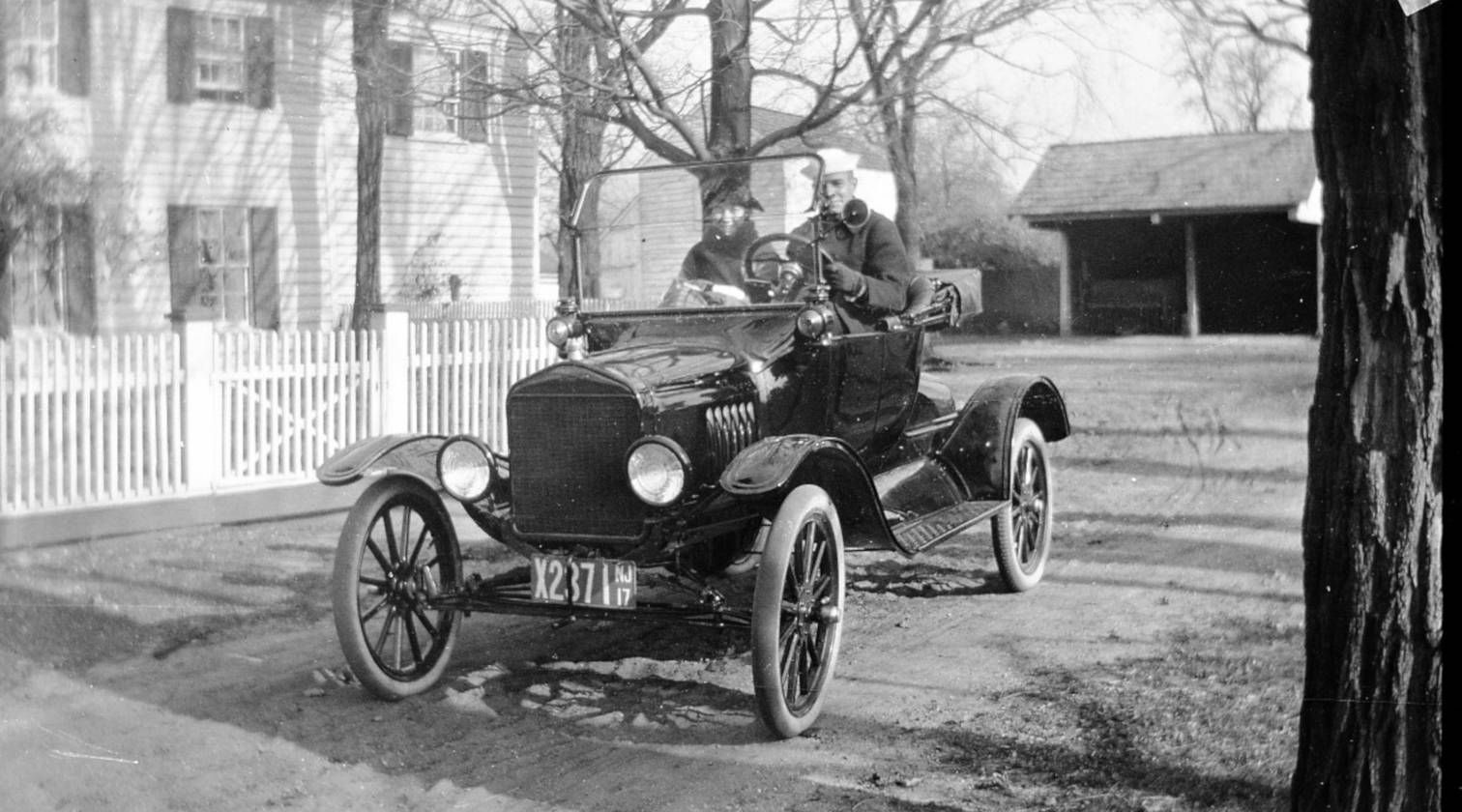
Cars represent a significant financial commitment, and consumers rightfully expect their vehicles to deliver lasting dependability. Yet, the automotive landscape isn’t without its pitfalls. Even reputable brands occasionally release models that fall short of established reliability standards, leading to frustrating breakdowns, unexpected downtime, and significantly inflated ownership costs. Understanding precisely which vehicles have a historical track record of problems is absolutely crucial for anyone navigating the complex car market, whether they’re searching for a brand-new ride fresh off the lot or a pre-owned gem.
Our comprehensive analysis, drawing heavily on extensive testing, meticulous data analysis, and expert evaluations from trusted sources like Consumer Reports and a wide array of owner complaint databases, aims to equip you with the essential knowledge needed to make truly informed decisions. We’ve diligently reviewed data spanning the last decade and critically examined recent model years to pinpoint specific vehicles that have consistently underperformed in terms of reliability. This isn’t merely about identifying a faulty part; it’s about understanding the systemic issues that can render certain vehicles a particularly risky and financially draining investment for consumers.
In this in-depth report, we will meticulously delve into a selection of the most notoriously unreliable cars that have emerged over the past decade and those currently on the market. Our objective is to highlight not only the specific mechanical, electrical, and software failures that persistently plague these models but also to explore the broader implications for owners, ranging from an unending stream of persistent repair bills to a severe and rapid depreciation in resale value. By shedding critical light on these problematic vehicles, we sincerely hope to guide you towards more dependable choices and help you proactively avoid the hidden and often substantial costs associated with owning a car that simply doesn’t live up to its promise of reliability.
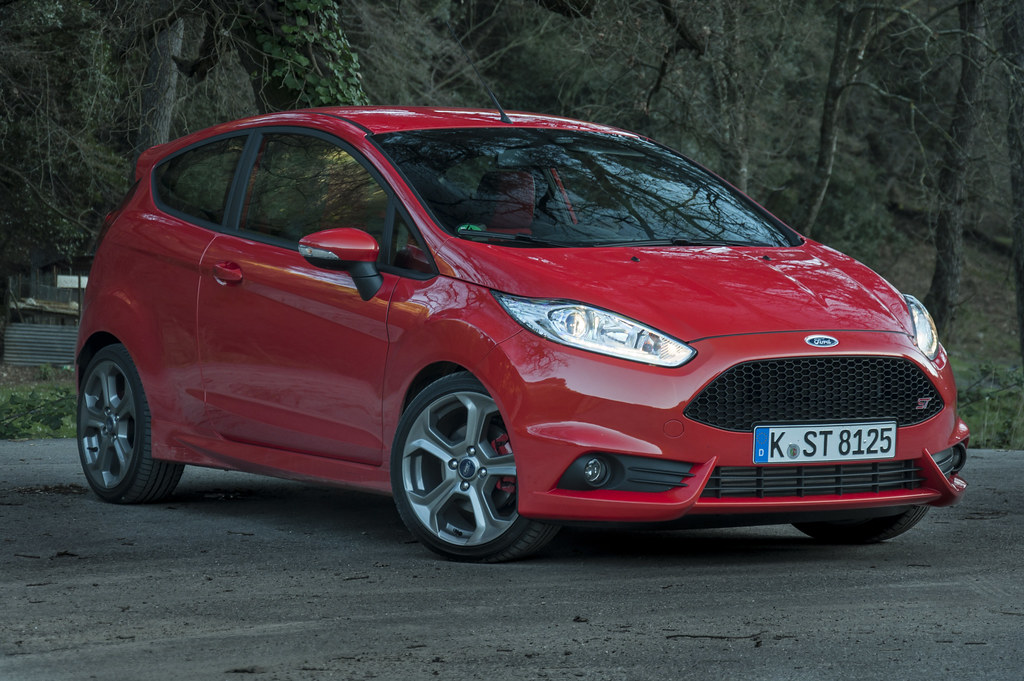
1. **2011-2019 Ford Fiesta: Transmission Troubles and Beyond**The Ford Fiesta, often perceived as a generally dependable and economical compact car, unfortunately saw its reputation significantly tarnished by models produced between 2011 and 2019. While some individual model years within this range might have achieved a respectable 4 out of 5 for reliability from partners like RepairPal, the widespread and chronic transmission issues in these particular iterations made them a notable and problematic exception. These specific model years were plagued with persistent transmission problems that had a significant number of owners frequently visiting auto shops, facing unexpected downtime, and considerable repair expenses.
At the core of the problem lay the dual-clutch automatic transmission, a design choice intended to offer both enhanced fuel efficiency and a smooth, engaging driving experience. Instead, this component became an unyielding source of constant frustration for countless drivers. Owners meticulously documented a consistent pattern of severe operational issues, which frequently included unexpected stalling, extremely rough and inconsistent gear shifting, and in many unfortunate and costly cases, outright premature transmission failure. These fundamental flaws severely compromised the vehicle’s basic functionality and fundamentally detracted from the driving enjoyment.
Reports on platforms like Car Complaints paint a vivid and consistent picture of owner dissatisfaction and distress. A substantial majority of Ford Fiesta owners from these model years detailed an intermittent but pronounced shudder that occurred whenever they accelerated from a complete stop, along along with strange, unsettling, and often alarming noises emanating from the transmission during gear shifts. These issues were not merely minor annoyances; they fundamentally impacted the vehicle’s drivability, raised legitimate concerns about its long-term safety, and called into question its overall structural integrity.
Compounding the frustration for consumers, many who meticulously reported these troubling symptoms to Ford dealerships were reportedly dismissed with the explanation that such behavior was merely a “normal effect of the type of transmission the car uses.” This response, while technically referring to the specific operating characteristics of dual-clutch systems, did little to alleviate the very real and practical problems, as the issues often rendered the vehicle virtually undrivable in daily conditions. One owner’s disheartening experience, where an oil seal replacement and clutch realignment offered only a temporary reprieve before the problem resurfaced after just 4,000 miles, perfectly illustrates the deep-seated and often unresolvable nature of these transmission faults. For many, the exorbitant cost of persistent repairs, or even a full transmission replacement, ultimately made these Fiestas a poor long-term investment.
Car Model Information: 2014 Ford Fiesta SE
Name: Ford Fiesta
Manufacturer: Ford Motor Company
Production: June 1976 – July 2023
Class: Supermini
BodyStyle: hatchback
Layout: Front-engine, front-wheel-drive layout
Successor: Ford Puma (crossover)
ModelYears: 1978–1980, 2011–2019 (North America)
Categories: 1980s cars, 1990s cars, 2000s cars, 2010s cars, 2020s cars
Summary: The Ford Fiesta is a supermini car that was marketed by Ford from 1976 to 2023 over seven generations. Over the years, the Fiesta has mainly been developed and manufactured by Ford’s European operations, and had been positioned below the Escort (later the Focus).
Ford had sold over 15 million Fiestas from 1976 to July 2011, making it one of the best-selling Ford nameplates behind the Escort and the F-Series. It has been manufactured in the United Kingdom, Germany, Spain, Brazil, Argentina, Venezuela, Mexico, Taiwan, China, India, Thailand, and South Africa.
The Fiesta was discontinued in 2023, after over 22 million units had been made. The final Ford Fiesta rolled off the production line on 7 July 2023.
Get more information about: Ford Fiesta
Buying a high-performing used car >>>
Brand: Ford Model: Fiesta
Price: $6,998 Mileage: 75,861 mi.
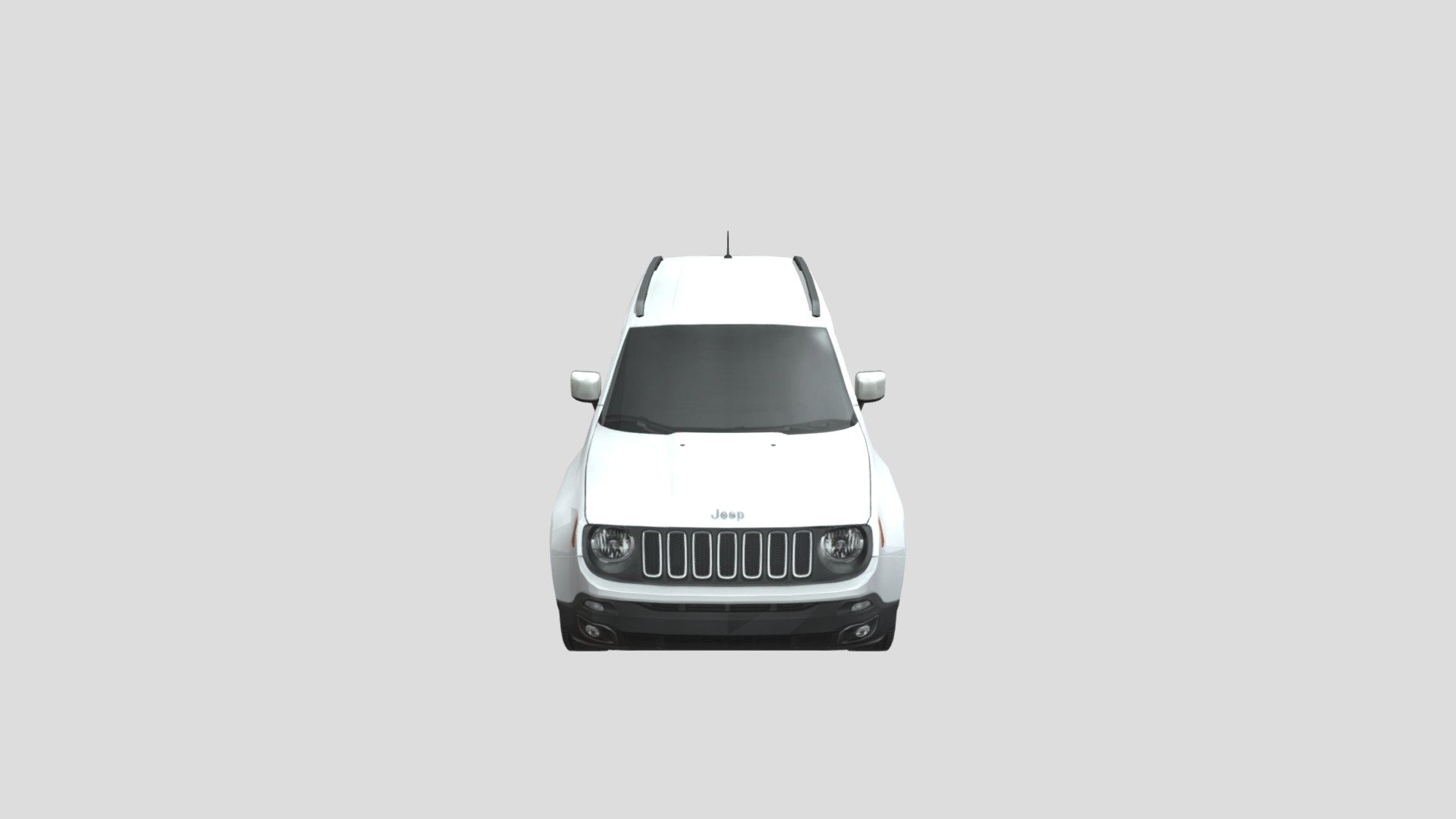
2. **2015 Jeep Renegade: Persistent Electrical Gremlins**Jeep, a brand celebrated globally for its robust capabilities and iconic off-roaders, encountered an unexpected and particularly vexing challenge with its 2015 Renegade model. This particular iteration quickly gained notoriety for a host of perplexing and often elusive electrical issues, affectionately dubbed “electrical gremlins” by many frustrated owners. These pervasive problems significantly undermined the vehicle’s perceived reliability and caused considerable inconvenience, leading to frequent, often unproductive, garage visits and unexpected expenses for consumers who had invested in what they confidently expected to be a dependable compact SUV.
The most significant and alarming manifestation of these electrical faults was the engine’s sporadic and unpredictable inability to turn over. This meant that at entirely unpredictable times, the Renegade simply wouldn’t start, leaving drivers stranded in various locations or completely unable to use their vehicle as intended for daily commuting or essential tasks. Reports on Car Complaints widely documented this critical failure, highlighting a fundamental flaw in the vehicle’s electrical control unit or its associated components that often proved incredibly difficult to accurately diagnose and effectively rectify by service technicians, prolonging owner agony.
The elusive and inherently intermittent nature of these electrical problems proved particularly challenging for both vehicle owners and service dealerships alike. One exasperated driver recounted how their car remained at the dealership for over a full month, as technicians struggled relentlessly and often fruitlessly to pinpoint and implement a lasting solution to the intermittent starting issue. The sheer unpredictability of the problem – with many Renegades starting up fine on some occasions and stubbornly refusing to ignite on others – created a constant sense of anxiety and distrust in the vehicle’s fundamental reliability, making it an inherently unreliable choice for routine daily transportation.
Beyond the critical starting failures, a myriad of other disconcerting electrical anomalies plagued the 2015 Renegade. A common and frustrating complaint involved the car’s battery inexplicably draining itself if the vehicle wasn’t driven for just a couple of days, with owners unable to identify any obvious reason for the persistent power loss. This issue often necessitated frequent jump-starts or premature battery replacements, strongly suggesting a deeper underlying parasitic draw or a flawed charging system that the manufacturer struggled to adequately address. These widespread and persistent electrical glitches significantly tarnished the 2015 Jeep Renegade’s reputation for dependability, making it a model that many consumer advocates strongly recommended avoiding.
Car Model Information: 1993 Jeep Wrangler Renegade
Name: Jeep Renegade
Manufacturer: Jeep
Production: 2014–present
ModelYears: 2015–2023 (US & Canada),2015–present (Mexico)
Assembly: ubl
Designer: Jeremy Glover and Ian Hedge
Class: Subcompact crossover SUV
BodyStyle: SUV
Layout: Front-engine, front-wheel-drive layout
Platform: GM Fiat Small platform
Related: Fiat 500X,Fiat 500L,Fiat Tipo (2015),Fiat Toro
Engine: ubl
Motor: 45 kW
Abbr: on
Transmission: Fiat Powertrain Technologies,Fiat Powertrain Technologies,Fiat Powertrain Technologies,Fiat Powertrain Technologies,Aisin,Fiat Powertrain Technologies,ZF Friedrichshafen
Battery: lithium-ion battery
Drivetrain: PHEV
Wheelbase: 101.2 in
Length: 166.6 in
Width: 71.1 in
Height: 66.5 in
Weight: convert
Sp: us
Categories: 2020s cars, All-wheel-drive vehicles, All articles with bare URLs for citations, Articles with PDF format bare URLs for citations, Articles with bare URLs for citations from August 2024
Summary: The Jeep Renegade is a subcompact crossover SUV produced by Stellantis under their Jeep marque. It was first shown to the public in March 2014 at the Geneva Motor Show and production started in late August of that year. The Renegade was the smallest vehicle currently marketed by Jeep, until the arrival of the Avenger. It slots between the Avenger and the Compass. It is based on the FCA Small Wide 4×4 platform, which is also shared with other FCA models, including those from Fiat and Alfa Romeo brands.
The Renegade comes as standard with front-wheel drive, with optional four-wheel drive systems Active Drive I and Active Drive Low, both of which are paired with Jeep’s Selec-Terrain System.
Get more information about: Jeep Renegade
Buying a high-performing used car >>>
Brand: Jeep Model: Renegade
Price: $15,995 Mileage: 82,476 mi.
Read more about: The 19 Most Unreliable Cars of the Decade: Avoid These Money Pits

3. **2013-2016 Dodge Dart: Engine and Transmission Woes**The Dodge Dart, specifically models released between 2013 and 2016, presented a stylish and modern aesthetic that initially appealed to many budget-conscious buyers seeking a fresh design. However, beneath its attractive exterior lay a series of profound and consistently reported mechanical shortcomings that relentlessly undermined its reliability. This particular period witnessed a substantial influx of complaints from owners, collectively pointing to persistent and troubling issues with both the vehicle’s engine and its transmission systems, making it a source of ongoing frustration, unexpected repair costs, and significant owner dissatisfaction.
One of the most alarming and critically dangerous problems reported by 2016 Dart drivers, as extensively documented on platforms like Car Complaints, involved instances of complete power loss while the vehicle was in motion. These terrifying occurrences, often happening on busy freeways or at high speeds, posed severe safety risks, placing drivers and their occupants in highly vulnerable and perilous situations. Such catastrophic failures were frequently linked to critically low engine oil levels, which in turn brought to light another widespread and equally concerning issue: the Dart’s unusually rapid and excessive oil consumption.
Indeed, the rate at which the Dodge Dart consumed engine oil was a major and inconvenient point of concern for owners. Some reported that their vehicles could deplete their engine oil from a full reservoir to an empty state in as little as 30 days. This astonishingly fast consumption rate dramatically shortened routine maintenance intervals, forcing owners to check and top off oil far more frequently than the manufacturer’s recommended 6-12 month oil change cycle, incurring additional expense, inconvenience, and uncertainty. Failure to monitor oil levels vigilantly could easily lead to severe engine damage or the aforementioned dangerous power loss incidents.
Furthermore, the transmission system, particularly the dual-clutch automatic offered in these models, proved to be another significant Achilles’ heel for the Dodge Dart. Owners consistently reported difficulties achieving smooth gear shifts, describing instances of rough, jerky, or significantly delayed transitions that detracted considerably from the overall driving experience. Beyond the powertrain, various electrical issues were also common, manifesting as malfunctioning power windows and erratic sensor readings. Moreover, the vehicle’s suspension system often showed premature wear, leading to uneven tire wear patterns and compromised handling dynamics. These combined factors ensured that the Dodge Dart, despite its initial appeal, consistently failed to deliver on the promise of lasting reliability.
Car Model Information: 2015 Dodge Dart SXT
Name: Dodge Dart
Caption: 1966 Dodge Dart GT 2-door hardtop
Manufacturer: Dodge
Production: 1959–1976 (US market)
ModelYears: 1960–1976 (US market)
Class: Full-size
Layout: FR layout
Predecessor: Dodge Coronet#Fourth generation (1957–1959)
Related: Plymouth Valiant,Chrysler Valiant,Dodge Phoenix
Successor: Dodge Aspen,Dodge Diplomat,Talbot Tagora
Categories: 1970s cars, All articles with unsourced statements, Articles with short description, Articles with unsourced statements from December 2023, Articles with unsourced statements from May 2025
Summary: The Dodge Dart is a line of passenger cars produced by Dodge from the 1959 to 1976 model years in North America, with production extended to later years in various other markets.
The production Dodge Dart was introduced as a lower-priced full-size model in 1960 and 1961, but became a mid-size car for one model year for 1962, and was then reduced to a compact for two generations, from 1963 to 1976.
Chrysler had first used ‘Dart’ name plates on two Italian styled show cars, in 1956 and 1957, before it became a Dodge model name. The Dart nameplate was resurrected for a Fiat-derived compact car that was introduced in 2012.
Get more information about: Dodge Dart
Buying a high-performing used car >>>
Brand: Dodge Model: Dart
Price: $9,995 Mileage: 143,082 mi.
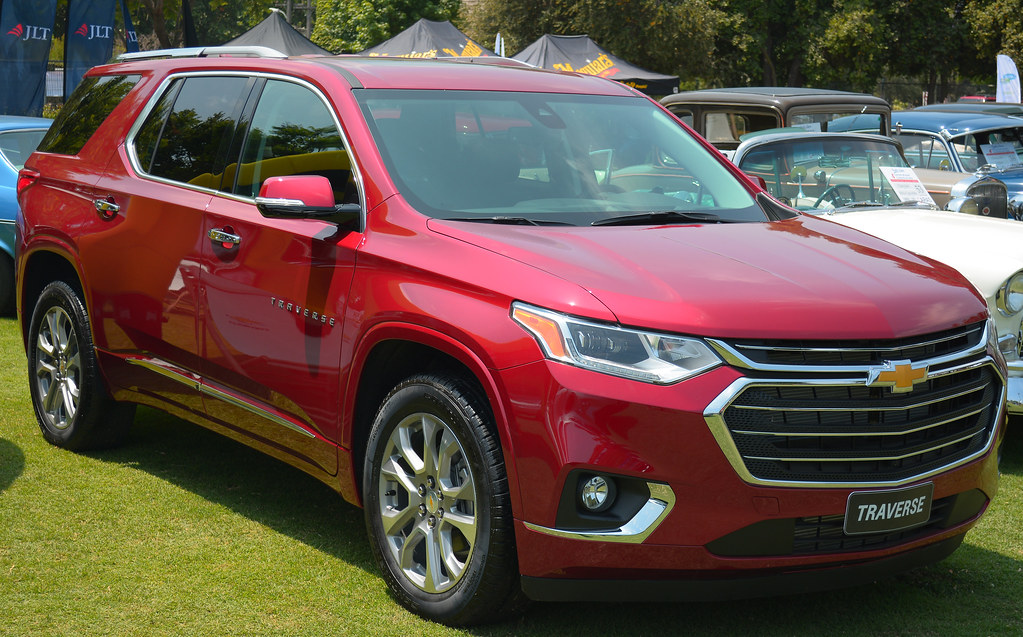
4. **2017 Chevrolet Traverse: Steering and Suspension Failures**While Chevrolet stands as a foundational pillar of American automotive manufacturing, not every model it produces consistently meets the high standards of dependability that consumers have rightfully come to expect. The 2017 Chevrolet Traverse, unfortunately, serves as a cautionary tale, particularly with numerous reports detailing significant steering and suspension problems from its ownership base. These issues, while varied in their immediate impact, collectively diminished the vehicle’s safety profile, ride comfort, and overall long-term value, ultimately burdening owners with unforeseen and substantial expenses.
A peculiar and critical design flaw was unequivocally pinpointed as a direct contributor to a prevalent and dangerous steering problem. According to multiple Traverse drivers and service records, the power steering lines and coolant lines were routed in an uncomfortably close proximity within the engine bay. This spatial arrangement inadvertently created a scenario where these essential lines could rub against each other over time, leading to abrasion, premature wear, and eventual fluid leaks. The inevitable and critical consequence of such leaks was a significant loss of power steering functionality, making the vehicle increasingly difficult and potentially dangerous to maneuver, especially at low speeds or during critical parking maneuvers.
Remedying the power steering issue often required costly and intricate repairs, involving the replacement of damaged lines, pumps, and associated components, which could easily run into significant hundreds or even thousands of dollars. The recurring nature of this problem strongly suggested a fundamental design oversight rather than an isolated manufacturing defect, a frustrating reality for owners who found themselves repeatedly addressing the same underlying fault. Such issues not only presented a substantial financial burden but also severely eroded confidence in the vehicle’s fundamental engineering and long-term durability.
Beyond the steering system, the 2017 Traverse also demonstrated notable shortcomings in its suspension components. One owner vividly described the alarming and sudden failure of their steering rack and the front suspension lower control arm mount bushing after a remarkably short period of just two years of ownership. This severe structural failure necessitated the replacement of both critical components, an extensive repair that incurred a substantial cost of $2,495. Such premature and comprehensive suspension repairs are a clear and unequivocal indicator of underlying design weaknesses, suboptimal material quality, or insufficient engineering, challenging the inherent expectation of robustness that consumers typically associate with a large SUV. These combined steering and suspension issues firmly established the 2017 Chevrolet Traverse as a model to approach with extreme caution, particularly for those who prioritize long-term reliability and predictable maintenance costs.
Car Model Information: 2019 Chevrolet Traverse LS
Name: Chevrolet Traverse
Caption: 2025 Chevrolet Traverse RS
Manufacturer: General Motors
Production: 2008–present
ModelYears: 2009–present
Class: Full-size crossover SUV
Layout: ubl
Predecessor: Chevrolet TrailBlazer
Categories: 2010s cars, 2020s cars, All-wheel-drive vehicles, All Wikipedia articles written in American English, All articles with dead external links
Summary: The Chevrolet Traverse is a full-size crossover SUV with three-row seating built by General Motors produced since the 2009 model year. It is built on the same platform as the GMC Acadia and Buick Enclave, known as the Lambda platform for the first generation, and the C1XX for the second generation. It also shares the C1XX platform with the Cadillac XT6. It is the successor to the TrailBlazer body-on-frame SUV and the Uplander minivan.
The second-generation model debuted in showrooms in the middle of 2017. Starting with the 2019 model year, the Traverse was slotted above the new mid-size Chevrolet Blazer as part of Chevrolet’s plans to expand its SUV lineup.
The Traverse name was originally used for a concept car at the 2003 North American International Auto Show in Detroit, but that concept gave way when the Equinox launched for the 2005 model year.
Get more information about: Chevrolet Traverse
Buying a high-performing used car >>>
Brand: Chevrolet Model: Traverse
Price: $17,997 Mileage: 55,061 mi.
Read more about: The 19 Most Unreliable Cars of the Decade: Avoid These Money Pits

5. **2018 Land Rover Discovery: Air Suspension and Electrical Issues**Land Rover, a marque globally revered for its blend of undeniable luxury, formidable off-road prowess, and an implied promise of sophisticated engineering, regrettably missed its mark with the 2018 Discovery model. This particular iteration proved to be a significant disappointment, plagued by a persistent series of critical issues. Most notably, its advanced air suspension system and a wide array of pervasive electrical problems emerged as consistent sources of owner frustration, severely undermining the brand’s distinguished reputation for reliability and the premium ownership experience it consistently strives to deliver.
The sophisticated air suspension system, a key feature meticulously designed to provide both an exceptionally smooth on-road ride and adaptable ground clearance for demanding off-road excursions, instead became a significant Achilles’ heel for many owners. Reports indicated frequent malfunctions, leading to an uncomfortable and unpredictable ride quality, compromised handling dynamics, and the constant specter of expensive, complex repairs. Given the intricate nature of these high-tech systems, diagnosis and repair are typically labor-intensive and replacement parts are costly, contributing substantially to an inflated overall cost of ownership—a stark contradiction to the perceived value of a luxury SUV.
The frequency and severity of these air suspension failures were particularly vexing for consumers who had invested a significant sum in a premium vehicle with the explicit expectation of superior performance and unwavering durability. Many found themselves facing recurrent issues, necessitating multiple, often lengthy, visits to authorized service centers and enduring significant periods of vehicle downtime. This consistent pattern of unreliability in a core, high-tech component chipped away at owner trust and highlighted potential vulnerabilities in the vehicle’s design or component sourcing for this specific model year, impacting its long-term appeal.
Compounding the air suspension woes was an extensive array of electrical issues that often defied straightforward diagnosis and simple repair, adding layers of complexity for technicians. Reports indicated critical problems ranging from key fobs consistently failing to reliably start the engine—a basic yet essential function expected of any modern vehicle—to the far more alarming scenario of the engine completely shutting off while the vehicle was in motion. These widespread electrical glitches, encompassing everything from minor inconveniences to potentially life-threatening safety hazards, severely eroded customer confidence. The cumulative effect was a surge in complaints about the frequency and exorbitant cost of necessary repairs, cementing the 2018 Land Rover Discovery’s unfortunate reputation for falling considerably short of the dependability expected from a high-end, luxury off-road vehicle.
Car Model Information: 2025 Acura RDX Base
Sp: uk
Name: Land Rover Discovery
Caption: 2018 Land Rover Discovery
Manufacturer: Land Rover Ltd.,Jaguar Land Rover
Production: 1989–present
Class: Executive car,Sport utility vehicle
Layout: Front-engine, four-wheel-drive
Categories: All-wheel-drive vehicles, All Wikipedia articles written in British English, All articles lacking reliable references, All articles with unsourced statements, Articles lacking reliable references from December 2010
Summary: The Land Rover Discovery is a series of five or seven-seater family SUVs, produced under the Land Rover marque, from the British manufacturer Land Rover, and later Jaguar Land Rover. The series is currently in its fifth iteration (or generation, according to the manufacturer), the first of which was introduced in 1989, making the Discovery the first new model series since the launch of the 1970 Range Rover – on which it was based – and only the third new product line since the conception of the Land Rover (vehicle and brand) by Rover in 1948. The model is sometimes called influential, as one of the first to market a true off-road capable family car.
Although the Range Rover had originally been designed as an everyday four wheel drive car that could be used as both a utility vehicle and a family car, it had progressively moved upmarket through its life to evolve into a luxury vehicle sold at a much higher price point. The Discovery was intended to fulfill the role the Range Rover originally was intended for; a segment which was now dominated by Japanese rivals such as the Nissan Patrol, Mitsubishi Pajero and Toyota Land Cruiser. Although positioned below the Range Rover in the company’s line-up, the vehicle was both longer and higher, offered more room in the back, and optionally also more seats. Space utilization became more sophisticated in later generations, but the series keeps offering seats for seven occupants. Despite originally being sold as an affordable alternative to the Range Rover, the Discovery has also progressively moved upmarket through its successive generations to become a bonafide luxury SUV.
The second Discovery (1998) was called the Series II, and although it featured an extended rear overhang, it was otherwise an extensive facelift, which carried over the 100 in (2,540 mm) wheelbase frame and rigid, live front and rear axles derived from the original Range Rover.
The third generation – succeeding the Series II in 2004 – was either called the Discovery 3 or simply LR3 (in North America and the Middle East). This was a new ground up design, the first all-original design for the Discovery. Although it followed the 2002 third generation Range Rover, also switching to fully independent suspension, it still received a separate, but integrated body and frame (IBF) structure. The fourth generation, as of 2009 – like the series II, was again mainly an update of the new generation – marketed as the Discovery 4, or Land Rover LR4 for North American and Middle Eastern markets.
The fifth generation of the Discovery, introduced in 2017, no longer sports a numeric suffix. Unlike the previous two generations, it now benefits from a unitized body structure, making it lighter than its predecessor.
Get more information about: Land Rover Discovery
Buying a high-performing used car >>>
Brand: Land Rover Model: Discovery
Price: $42,564 Mileage: 4,198 mi.
Read more about: Buyer Beware! These 15 Cars Will Become Your Worst Financial Nightmare After Hitting 100,000 Miles
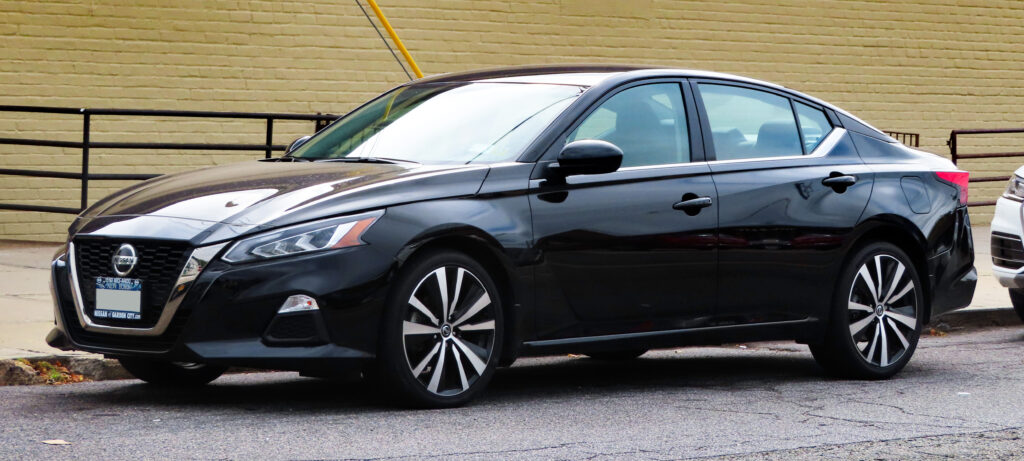
6. **2019 Nissan Altima: Lingering CVT Problems**The 2019 Nissan Altima regrettably perpetuated a long-standing and deeply problematic history of continuously variable transmission (CVT) issues that have, for years, cast a considerable shadow over various Nissan models. For this specific model year, these CVT defects were so profound and widespread in their impact that they became the central focus of a class action lawsuit initiated against the automaker in 2022. This significant legal action served as a potent testament to the significant negative impact these faulty transmissions had on drivers, raising serious and legitimate questions regarding the vehicle’s fundamental safety and its overall reliability.
The lawsuit meticulously detailed the multitude of undesirable and potentially perilous driving experiences directly attributed to the defective CVT in the 2019 Altima. Owners consistently reported a litany of alarming symptoms, including their cars exhibiting violent shaking, jarring jerks, uncontrollable lurching, unsettling juddering sensations, and even unexpected stalling while in operation. These highly unpredictable and erratic behaviors not only created an incredibly uncomfortable and profoundly unreliable driving environment but also directly exposed drivers, passengers, and other road users to an elevated risk of accidents and dangerous incidents on public roads.
The very core promise of a continuously variable transmission—which is to provide a seamless, smooth, and highly efficient power delivery by eliminating traditional gear shifts—was fundamentally betrayed by these pervasive defects. Instead of a fluid and reassuring driving experience, owners were confronted with a vehicle whose primary mode of operation was compromised, leading to a constant state of uncertainty, frustration, and deep dissatisfaction. This widespread failure of a critical drivetrain component underscored a significant engineering and quality control oversight on Nissan’s part for this particular model year.
What made the situation particularly galling and financially burdensome for 2019 Altima owners was the disturbing similarity of these issues to those experienced with CVTs in earlier Nissan models, notably the 2013-2016 Altimas. Those earlier iterations were eventually subjected to a comprehensive manufacturer recall due to a critical defect that could cause sudden power loss and a heightened potential for crashes. Despite the glaring parallels and the subsequent class action lawsuit targeting the 2019 model, Nissan conspicuously chose not to issue a recall for its transmission issues in this instance. Consequently, any owner who encountered a CVT fault was left to shoulder the entire financial burden of diagnostic work and costly repairs entirely out of their own pocket, adding substantial insult to an already frustrating injury and firmly establishing the 2019 Nissan Altima’s unfortunate reputation as a significantly unreliable vehicle choice that consumers should think twice about.
Car Model Information: 2023 Nissan Altima 2.5 SR
Name: Nissan Altima
Caption: 2024 Nissan Altima SR (L34; US)
Manufacturer: Nissan
Aka: Nissan Bluebird
Production: 1992–present
Class: Compact car
Predecessor: Nissan Bluebird,Nissan Stanza
ModelYears: 1993–present
Categories: 2000s cars, 2010s cars, 2020s cars, All-wheel-drive vehicles, All Wikipedia articles written in American English
Summary: The Nissan Altima is a mid-size car manufactured by Nissan since 1992. It is a continuation of the Nissan Bluebird line, which began in 1955.
The Altima has historically been larger, more powerful, and more luxurious than the Nissan Sentra but less so than the Nissan Maxima. The first through fourth-generation cars were manufactured exclusively in the United States and officially sold in North and South America, along with the Middle East and Australia. For other markets, Nissan sold a related mid-size sedan called the Nissan Teana which was between the Altima and Maxima in terms of size. In 2013, the Teana became a rebadged version of the fifth-generation Altima.
The name “Altima” was originally applied to a top trim line of the Nissan Leopard for the Japanese market in 1986, and then to the Nissan Laurel Altima mid-size car sold in Central America and the Caribbean before 1992. In 1992, Nissan discontinued the Stanza which was a Nissan Bluebird clone, replacing it with the US-built Altima, while remaining a compact car. The first Altima was produced in June 1992, as a 1993 model. All Altima models for the North American market were built in Smyrna, Tennessee, until June 2004, when Nissan’s Canton, Mississippi plant also began producing the model to meet high demand.
Get more information about: Nissan Altima
Buying a high-performing used car >>>
Brand: Nissan Model: Altima
Price: $22,390 Mileage: 45,259 mi.
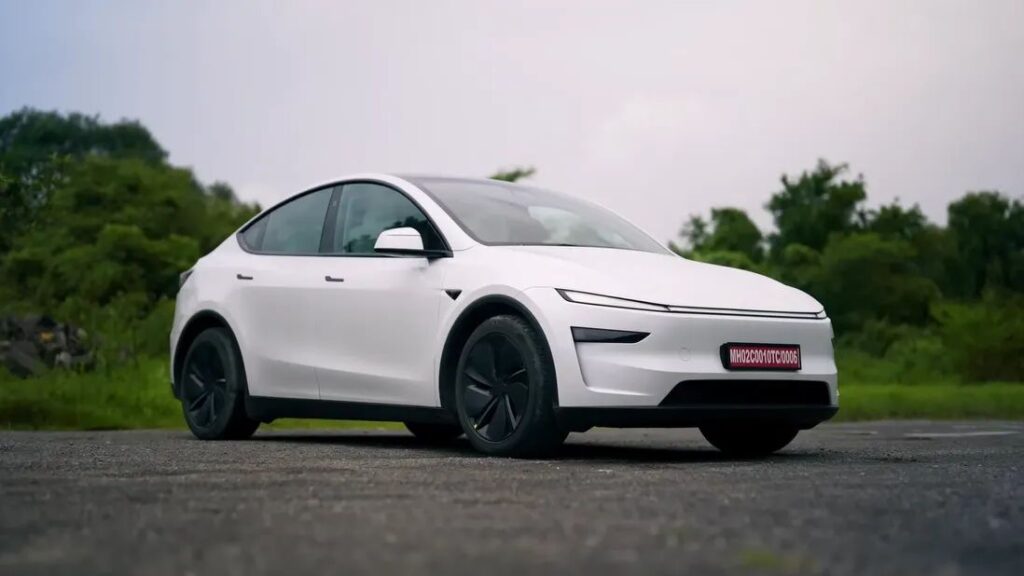
7. **2020 Tesla Model Y: Build Quality and Software Glitches**Tesla has undeniably taken the lead in the electric vehicle market, pushing innovation and design boundaries. However, even pioneering brands can face significant challenges when it comes to consistent manufacturing quality across their entire product line. The 2020 Model Y, a highly anticipated electric SUV, unfortunately, became a focal point for customer concerns regarding its fundamental build quality and the reliability of its integrated software systems, leaving many owners with unmet expectations for a premium vehicle.
Numerous reports from owners extensively documented a surprising array of issues relating to the physical construction of their vehicles. These included noticeable and often visually unappealing panel gaps, where different body panels did not align precisely, as well as various paint defects that detracted from the vehicle’s aesthetic appeal. Such shortcomings in basic fit and finish are particularly disappointing for a vehicle positioned at a higher price point, suggesting a lapse in quality control during the manufacturing process.
Beyond the cosmetic and structural inconsistencies, the 2020 Model Y also exhibited vulnerabilities in its advanced technological core. Its sophisticated infotainment systems, central to the Tesla driving experience, were reportedly prone to malfunctioning. These glitches could range from minor annoyances to more significant operational disruptions, affecting navigation, climate control, and entertainment features. For a vehicle that heavily relies on its software for core functionalities, these issues naturally raised serious questions about the overall dependability of the car itself.
When consumers invest in a technologically advanced vehicle, there’s a reasonable expectation that fundamental aspects like exterior finish and critical operating software will function flawlessly. The persistent reports of these issues in the 2020 Model Y indicate that, despite its innovative features, prospective buyers should approach this specific model year with a careful and informed perspective, weighing the potential for unexpected frustrations.
Car Model Information: 2025 Acura RDX Base
Name: Tesla Model Y
Caption: Pre-2025 Tesla Model Y
Manufacturer: Tesla, Inc.
Production: January 2020 – present
Assembly: Unbulleted list
Designer: Franz von Holzhausen
Class: Compact crossover SUV
BodyStyle: SUV
Layout: Unbulleted list
Related: Unbulleted list
Motor: unbulleted list
Battery: val,Lithium-ion battery
ElectricRange: FTP-75
Charging: unbulleted list
Wheelbase: Unbulleted list
Length: Unbulleted list
Width: cvt
Height: Unbulleted list
Weight: cvt
Sp: us
Categories: 2020s cars, All Wikipedia articles written in American English, All articles lacking reliable references, All articles that may contain original research, All articles to be expanded
Summary: The Tesla Model Y is a battery electric compact crossover SUV produced by Tesla, Inc. since 2020. The vehicle was presented in March 2019 as the company’s fifth production model since its inception after the Roadster, Model S, Model X and Model 3.
After its 2019 introduction, the Model Y started production at the Tesla Fremont Factory in California, US in January 2020. Production at Giga Shanghai, China was added in December 2020, and at Gigafactory Texas, US since late 2021. Deliveries from Gigafactory Berlin-Brandenburg, Germany started in March 2022.
The Model Y is based on the Model 3 sedan and serves as a larger variant, with around 76 percent of parts being shared between the two and identical exterior and interior styling. While most Model Y are configured with two-row seating, in the US the Model Y offers optional third-row seats for a seven-passenger seating capacity.
In 2023, Tesla delivered 1.2 million Model Ys, making it the world’s best-selling vehicle that year, surpassing the Toyota Corolla and becoming the first electric vehicle to claim that title. With at least 2.16 million units delivered since its start of production up to December 2023, the Model Y is also the most popular electric vehicle of all time. In 2024 sales were second to the Toyota RAV4. A refreshed version of the Model Y was revealed in January 2025, with upgrades similar to the upgraded Model 3.
In mid-2025, Tesla unveiled and released the Model Y L, a long-wheelbase, six-seat variant of the Model Y. That year, Tesla debuted the performance model of the Model Y.
Get more information about: Tesla Model Y
Buying a high-performing used car >>>
Brand: Tesla Model: Model Y
Price: $42,564 Mileage: 4,198 mi.
Read more about: Beyond the Badge: Uncovering the Hidden Flaws in 14 Fan-Favorite Vehicle Models
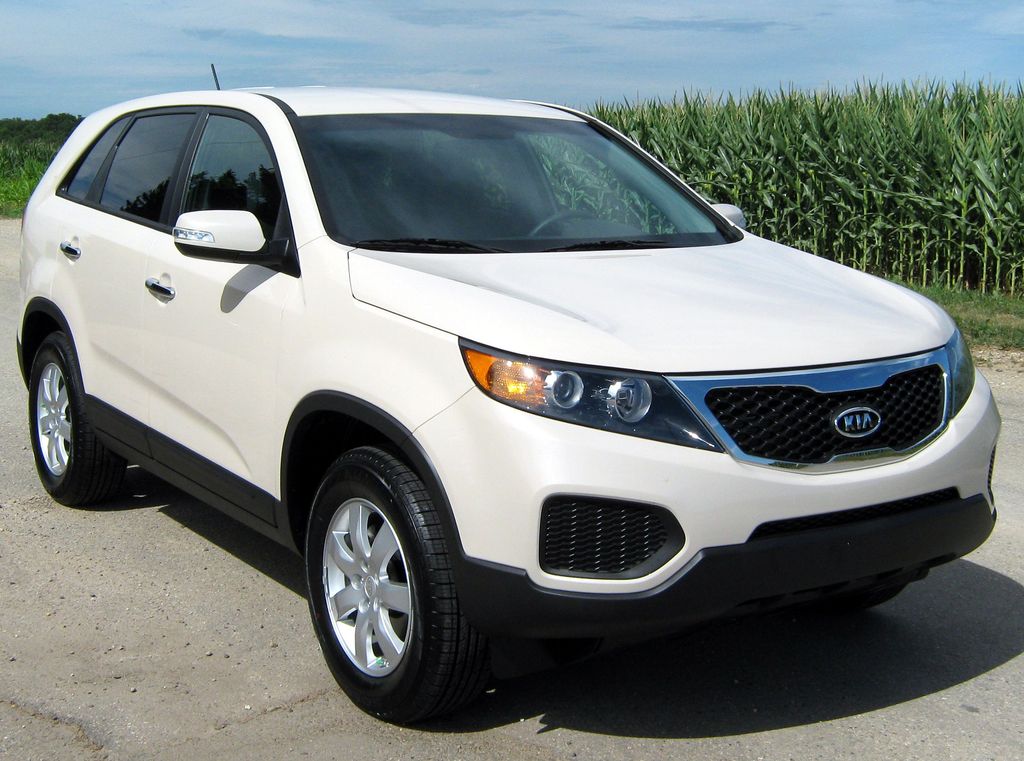
8. **2021 Kia Seltos: Engine Failures**Despite being a relatively new entrant to the market, the 2021 Kia Seltos quickly accumulated a concerning number of complaints to the National Highway Traffic Safety Administration (NHTSA) related to its engine performance. This rapid emergence of powertrain issues in a vehicle so early in its lifecycle immediately signals potential underlying manufacturing or design flaws that could have significant long-term implications for owners. The sheer volume of these complaints, arising within just a few years of its launch, is a red flag for any consumer prioritizing vehicle reliability.
The core of these engine problems centered around critical internal components. Key issues frequently reported by owners included premature failure of piston rings and an alarming rate of excessive oil consumption. Such problems are not minor inconveniences; faulty piston rings can severely compromise engine compression and lead to a dramatic reduction in performance, while excessive oil use can cause premature wear and even catastrophic engine failure if not constantly monitored and replenished. Some of these vital components reportedly failed as early as the 11,000-mile mark, highlighting a severe defect.
In response to these widespread issues, a recall was eventually issued. However, the efficacy of this corrective action was unfortunately limited, as many customers continued to report that the underlying engine problems persisted even after the required repair work had been completed. This ongoing pattern of failure, even post-recall, points to a deeper systemic issue that was not adequately addressed by the initial manufacturer’s solution.
Compounding the frustration for consumers, Kia has reportedly shown reluctance to fully accept responsibility for these persistent issues, leaving many owners with the financial burden of subsequent, costly repair bills. This lack of comprehensive support, combined with recurring engine failures, firmly positions the 2021 Kia Seltos as a model that presents considerable financial risk and ongoing inconvenience for buyers, making it an unreliable choice in the compact SUV segment.
Car Model Information: 2024 Kia Seltos S
Name: Kia Seltos
Caption: Kia Seltos (SP2, facelift)
Manufacturer: Kia
ModelCode: SP2,SP2i,SP2c
Aka: Kia KX3#SP2c
Production: 2019–present
ModelYears: 2021–present (North America)
Assembly: ubl
Designer: Hong Seok Choi
Class: Subcompact crossover SUV
BodyStyle: Sport utility vehicle
Layout: ubl
Platform: Hyundai-Kia K2 platform
Related: ubl
Engine: ubl
Transmission: ubl
Wheelbase: ubl
Length: ubl
Width: Convert
Height: ubl
Weight: ubl
Predecessor: Kia KX3#KC
Sp: us
Categories: 2020s cars, All-wheel-drive vehicles, All articles with dead external links, Articles containing Korean-language text, Articles with dead external links from June 2025
Summary: The Kia Seltos is a subcompact crossover SUV manufactured by Kia. Introduced in mid-2019, the Seltos is positioned between the smaller Stonic, Soul, or Sonet and the larger Sportage in Kia’s global SUV lineup. The Seltos is designated as a global product with three variations introduced for different markets. The first variation is the largest version of the Seltos, which is manufactured in South Korea (codename: SP2) mainly aimed at developed markets, including North America and Australasia. The two other variations are the Indian-made Seltos (codename: SP2i) and the closely related Chinese version badged as the Kia KX3 (codename: SP2c). The SP2i and SP2c models are the low-cost versions of the Seltos to penetrate emerging markets, built on the Hyundai-Kia K2 platform and closely related to the second-generation Hyundai Creta/ix25. Despite being a globally marketed model, the Seltos is not sold in the European market. The name “Seltos” is derived from “Celtos”, the son of Hercules and Celtine in Greek mythology. According to Kia, the Seltos will be marketed to millennials.
Get more information about: Kia Seltos
Buying a high-performing used car >>>
Brand: Kia Model: Seltos
Price: $22,298 Mileage: 29,506 mi.
Read more about: The 19 Most Unreliable Cars of the Decade: Avoid These Money Pits

9. **2022 Ford Explorer: Drivetrain and Electrical Issues**Ford, as a long-standing titan of American automotive manufacturing, has a reputation for producing robust and reliable vehicles. However, even the most established automakers can experience a misstep, and for the 2022 Ford Explorer, persistent issues with its drivetrain, electrical systems, and software glitches have unfortunately tarnished its reliability standing. These problems, critical to the vehicle’s fundamental operation, have led to significant owner disappointment and unforeseen financial implications for many who purchased this popular SUV.
Reports consistently highlight issues within the Explorer’s drivetrain, the complex system responsible for transmitting power from the engine to the wheels. Such problems can manifest as rough shifts, unexpected power loss, or unusual noises, directly impacting the vehicle’s drivability and safety. When coupled with various electrical issues, these faults create a frustrating and often difficult-to-diagnose situation for technicians, leading to prolonged repair times and increasing inconvenience for owners.
Furthermore, the integration of complex software systems, which now control a vast array of vehicle functions, introduced another layer of potential unreliability. Software glitches in the 2022 Explorer have been reported, affecting everything from infotainment functionality to crucial operational parameters. These digital malfunctions can lead to unpredictable behavior, further eroding confidence in the vehicle’s overall dependability and adding to the list of potential headaches for its owners.
The repercussions of owning an unreliable vehicle extend far beyond the immediate inconvenience of breakdowns and garage visits. An established automaker like Ford is expected to deliver consistent quality, and when a model like the 2022 Explorer falls short, it impacts not only customer satisfaction but also the vehicle’s long-term resale value. For owners, this means not only the frustration of frequent repairs but also a potentially significant financial loss should they choose to sell, making it a purchase many might regret.
Car Model Information: 2023 Ford Explorer Limited
Name: Ford Explorer
Caption: Sixth-generation Ford Explorer
Manufacturer: Ford Motor Company
Production: 1990–present
ModelYears: 1991–present
Class: unbulleted list
Chassis: unbulleted list
Predecessor: Ford Bronco II
Successor: Ford Territory (Australia)
Categories: 2000s cars, 2010s cars, 2020s cars, All-wheel-drive vehicles, All Wikipedia articles in need of updating
Summary: The Ford Explorer is a range of SUVs manufactured by the Ford Motor Company since the 1991 model year. The first five-door SUV produced by Ford, the Explorer, was introduced as a replacement for the three-door Bronco II. As with the Ford Ranger, the model line derives its name from a trim package previously offered on Ford F-Series pickup trucks. As of 2020, the Explorer became the best-selling SUV in the American market.
Currently in its sixth generation, the Explorer has featured a five-door wagon body style since its 1991 introduction. During the first two generations, the model line included a three-door wagon (directly replacing the Bronco II). The Ford Explorer Sport Trac is a crew-cab mid-size pickup derived from the second-generation Explorer. The fifth and sixth generations of the Explorer have been produced as the Ford Police Interceptor Utility (replacing both the Ford Crown Victoria Police Interceptor and the Ford Police Interceptor Sedan).
The Explorer is slotted between the Ford Edge and Ford Expedition within North America’s current Ford SUV range. The model line has undergone rebadging several times, with Mazda, Mercury, and Lincoln each selling derivative variants. Currently, Lincoln markets a luxury version of the Explorer as the Lincoln Aviator.
For the North American market, the first four generations of the Explorer were produced by Ford at its Louisville Assembly Plant (Louisville, Kentucky) and its now-closed St. Louis Assembly Plant (Hazelwood, Missouri). Ford currently assembles the Explorer alongside the Lincoln Aviator and the Police Interceptor Utility at its Chicago Assembly Plant (Chicago, Illinois).
Get more information about: Ford Explorer
Buying a high-performing used car >>>
Brand: Ford Model: Explorer
Price: $28,999 Mileage: 38,525 mi.
Read more about: Unpacking the Unreliable: A Deep Dive into the 10 Least Dependable Car Models of 2025
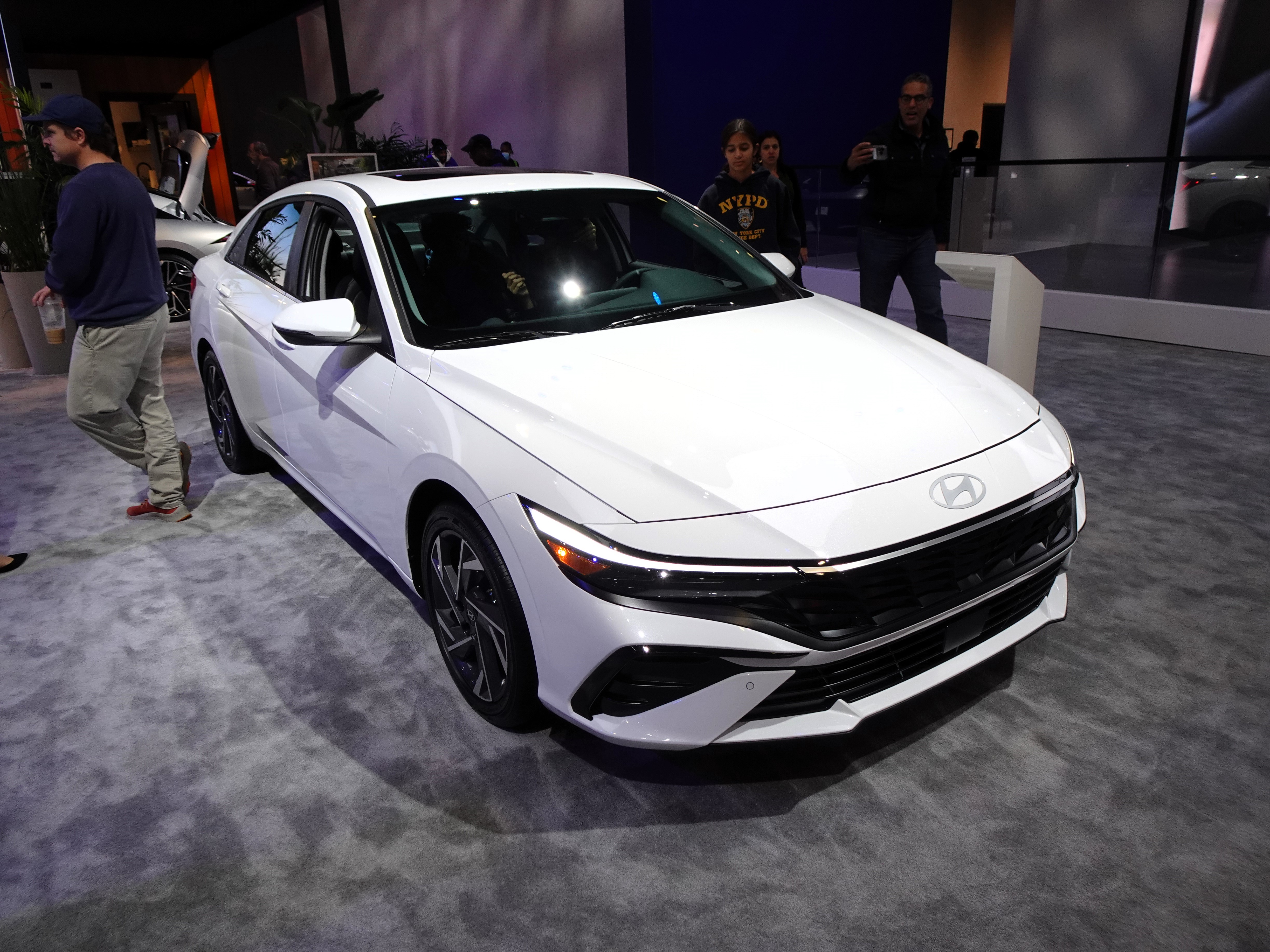
10. **2023 Hyundai Elantra: Steering and Brake System Problems**Released just last year, the 2023 Hyundai Elantra, a popular compact sedan known for its value and modern design, has swiftly revealed a concerning trend of significant mechanical issues. While it might initially appear premature for a brand-new model to develop a reputation for unreliability, reports have already surfaced detailing critical problems with its steering and brake systems. These are not minor flaws but rather fundamental safety components that directly impact the vehicle’s safe operation and handling capabilities.
Specific and alarming issues reported by owners include noticeable steering column noise, which can indicate excessive wear or looseness in critical steering components, and, more critically, instances of brake pedal failure. Brake system malfunctions, particularly the loss of pedal effectiveness, represent an extreme safety hazard. Such failures can compromise a driver’s ability to stop the vehicle effectively, potentially leading to dangerous situations on the road and raising serious questions about the vehicle’s inherent safety engineering.
Although the 2023 Elantra currently holds a respectable 4.5/5 reliability score from sources like RepairPal, it is important to note that these emerging steering and brake problems are relatively new. The full extent of their impact and long-term consequences may not yet be fully reflected in broader reliability metrics. However, given the critical nature of these components, the potential for wider impact in the future is a serious consideration for any prospective buyer.
For car buyers in search of a new vehicle that prioritizes safety and dependable performance, the early reports surrounding the 2023 Hyundai Elantra’s steering and brake systems serve as a strong cautionary note. While its affordability and styling might be attractive, the fundamental importance of these safety-critical systems means that potential buyers should exercise extreme caution and consider alternatives if long-term, worry-free ownership is a primary concern. Ignoring such foundational issues could lead to significant financial strain and, more importantly, compromised safety.
Car Model Information: 2023 Hyundai ELANTRA SEL
Name: Hyundai Elantra/Avante
Manufacturer: Hyundai Motor Company
Aka: Hyundai Avante,Hyundai Lantra (1990–2000),Hyundai i30 Sedan (2020–present)
Production: 1990–present
Class: Compact car
Layout: Front-engine, front-wheel-drive layout
Predecessor: Hyundai Stellar
Categories: 2000s cars, 2010s cars, 2020s cars, All Wikipedia articles written in British English, All articles with bare URLs for citations
Summary: The Hyundai Elantra, also known as the Hyundai Avante, is a compact car produced by the South Korean manufacturer Hyundai since 1990. The Elantra was initially marketed as the Lantra in Australia and some European markets. In Australia, this was due to the similarly named Mitsubishi Magna Elante model; in Europe because of the Lotus Elan. The home market name Avante used from the second generation is not used in most export markets due to its similarity with Audi’s “Avant” designation, used for their station wagon models. The name was standardized as “Elantra” worldwide in 2001 (except in South Korea, Singapore and Russia).
Get more information about: Hyundai Elantra
Buying a high-performing used car >>>
Brand: Hyundai Model: Elantra
Price: $20,347 Mileage: 27,335 mi.
Read more about: The 19 Most Unreliable Cars of the Decade: Avoid These Money Pits
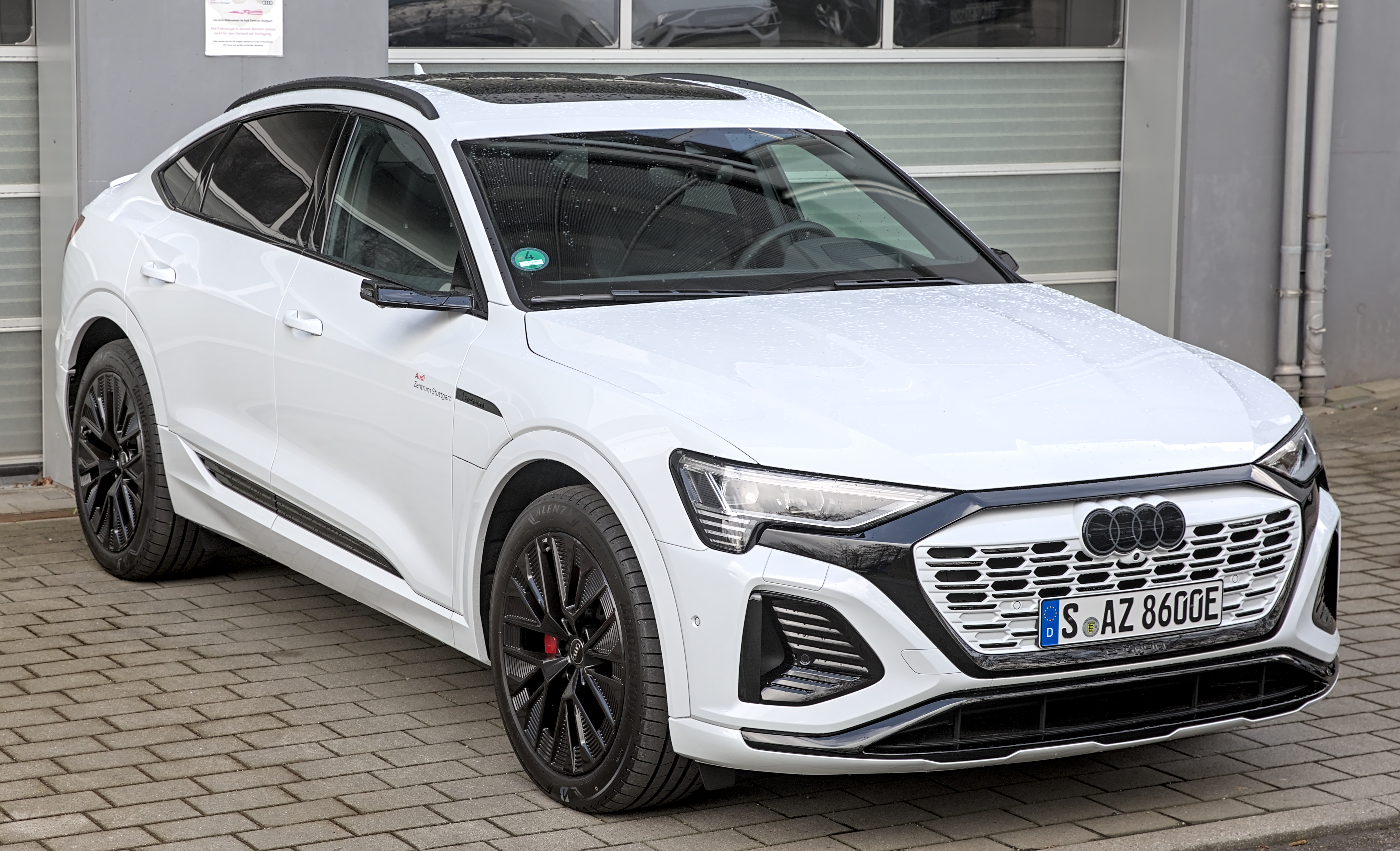
11. **Audi Q8 E-Tron: Questionable Reliability for a Luxury EV**Audi’s E-Tron, despite being discontinued with the closure of its sole production facility, remains a presence on the used car market. For those considering a pre-owned luxury electric SUV, it is imperative to be aware of the model’s notable shortcomings in reliability, which stand in stark contrast to the brand’s premium image. There are compelling reasons to approach this particular model with caution, especially concerning its overall dependability, which has been a consistent point of contention among owners and experts alike.
The vehicle’s reliability standing suffered a significant blow, with the E-Tron losing its Consumer Reports recommendation for reliability in 2024. This decision was directly influenced by comprehensive customer survey information, which indicated that Consumer Reports now considers the E-Tron to be “less reliable than average.” This rating, while not the absolute worst, certainly does not inspire confidence, particularly when considering the substantial investment required for a luxury electric vehicle that initially retailed for over $74,000.
Further reinforcing these concerns, J.D. Power’s reliability score for the E-Tron is situated on the lower end of the spectrum for its class. The vehicle notably failed to achieve a ranking among the top echelon of premium SUVs when evaluated against its direct competitors. This underperformance in key industry reliability assessments underscores a pattern of inconsistency that buyers should not overlook, especially when robust and dependable operation is a top priority for such a high-value purchase.
While the Audi Q8 E-Tron may appeal to a niche market seeking an all-electric luxury SUV, its documented reliability issues present a significant challenge. The market now offers numerous other SUVs and electric vehicles that boast demonstrably better reputations for dependability. Therefore, for consumers prioritizing consistent performance and fewer trips to the service center, exploring these more reliable alternatives would be a prudent decision before committing to an E-Tron.
Car Model Information: 2025 Acura RDX Base
Name: Audi Q8 e-tron
Caption: 2020 Audi e-tron 50
Manufacturer: Audi
Aka: Audi e-tron (2018–2023)
Production: 2018 – February 2025
ModelYears: 2018–2025
Assembly: Forest, Belgium
Designer: Jürgen Löffler
Class: Executive car,crossover SUV
BodyStyle: SUV
Layout: four-wheel drive
Platform: Volkswagen Group MLB platform#MLB Evo
Motor: unbulleted list
Transmission: Single speed with fixed ratio
Powerout: Current versions,(Q8 e-tron):,Q8 50 e-tron: {{convert,183,kW,hp,0,abbr=on,disp=br()
Abbr: on
Disp: br()
Battery: Current versions,(Q8 e-tron):,kilowatt hour,kilowatt hour,kilowatt hour,Previous versions,(e-tron):,kilowatt hour,kilowatt hour,kilowatt hour
Charging: Alternating current
Wheelbase: 2928 mm
Lk: on
Length: 4901 mm
Width: 1935 mm
Height: 1616 mm
Weight: Convert
Sp: uk
Categories: 2020s cars, All-wheel-drive vehicles, All articles with incomplete citations, Articles with incomplete citations from February 2020, Articles with short description
Summary: The Audi Q8 e-tron (formerly the Audi e-tron until 2023) is a battery electric mid-size luxury crossover produced by Audi since 2019. The e-tron was unveiled as a concept car at the 2015 Frankfurt Motor Show. The final production version was revealed in San Francisco on 17 September 2018, publicly debuted at the 2018 Paris Motor Show, and was first delivered in May 2019. It is the company’s first battery electric mass production car. The Sportback variant, a coupe style of the e-tron, entered production in 2020.
In 2022, the vehicle was facelifted and also renamed as the Audi Q8 e-tron (the performance version is called the SQ8 e-tron), in both regular and Sportback body styles, as Audi is expanding the e-tron battery electric vehicle line-up.
In October 2024, Audi announced that by February 2025 the production of the Audi Q8 e-tron would come to an end.
Get more information about: Audi Q8 e-tron
Buying a high-performing used car >>>
Brand: Audi Model: Q8 E-Tron
Price: $42,564 Mileage: 4,198 mi.
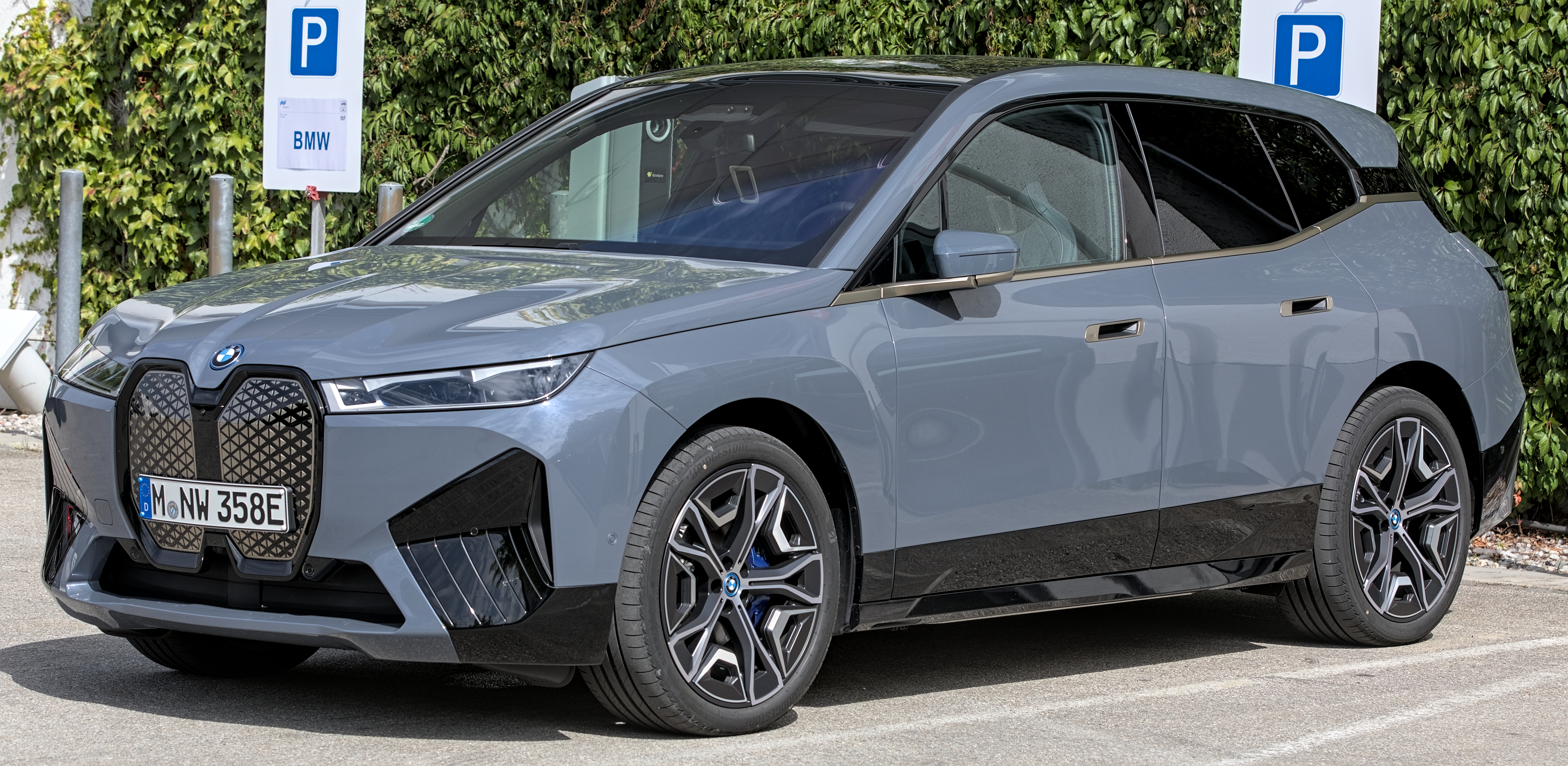
12. **BMW iX: Recalls and Owner Dissatisfaction**BMW’s iX, particularly the 2026 model, arrives with a host of appealing features, from larger wheels to refreshed color schemes, showcasing the brand’s commitment to luxury and innovation. However, beneath this polished exterior, critical questions linger regarding its long-term reliability. The iX experienced a significant setback in 2024, losing its reliability endorsement from Consumer Reports, which subsequently categorized it as “less reliable than average.” This downgrade should prompt caution among potential buyers.
While the iX’s overall reliability rating from sources like J.D. Power might appear average, a closer examination reveals that numerous more dependable options exist within its category. For instance, the 2024 Porsche Cayenne, Rivian R1S, and Cadillac XT6 were all identified as more reliable vehicles when compared directly to the 2024 iX. This highlights that while the iX might not be critically flawed, it certainly doesn’t stand out for its steadfastness when stacked against its peers.
A review of the iX’s recall history further illuminates its reliability challenges. The 2023 iX model accumulated an alarming 11 recalls, and the 2022 model year was not far behind with 10. Among these, some were particularly severe, including a “fire risk when parked” issue. The National Highway Traffic Safety Administration (NHTSA) explicitly warned that vehicles affected by this critical defect should not be driven until they have received the necessary manufacturer repairs, underscoring the serious safety implications of these design or manufacturing oversights.
Moreover, anecdotal evidence from owner forums frequently points to common reliability issues and concerns regarding customer service experiences with the iX. Many drivers reported needing to bring their brand-new 2022 iX models into the shop almost immediately after purchase, suggesting initial quality control problems. While some owners commended BMW for proactively addressing recalls, a considerable number expressed regret over their iX purchase, indicating that for many, the ownership experience has fallen short of the premium expectations associated with the BMW brand.
**Extended Warranties: Protecting Against Unreliable Vehicles**
If you find your vehicle proves to be less reliable than initially anticipated, a proactive measure you can take is to invest in a top-quality extended warranty. This strategic choice offers substantial peace of mind, ensuring that you are financially protected when unexpected breakdowns inevitably occur. With comprehensive coverage firmly in place, your chosen provider will assume responsibility for a significant portion, if not all, of your repair bills, potentially saving you hundreds or even thousands of dollars annually, which can make a substantial difference in the overall cost of ownership.
Every brand-new vehicle typically comes equipped with a factory warranty, also known as a manufacturer’s warranty. This is an explicit commitment from the automaker, vouching for the inherent quality and durability of its components. Should any part fail due to a manufacturing defect within a predetermined timeframe or mileage limit, the manufacturer is obligated to repair or replace it free of charge. While this coverage provides invaluable confidence during its active period, it is crucial to remember that once this factory warranty expires, the financial responsibility for any subsequent repairs shifts entirely to the vehicle owner.
Fortunately, for those who wish to maintain a similar level of protection beyond the factory warranty, there are viable options. One common route is to purchase a traditional extended warranty directly through a dealership. This type of plan effectively prolongs the duration of your factory warranty, granting you access to comparable benefits for an extended period. While conceptually appealing, dealership-backed extended warranties can often be expensive and come with restrictive terms. A critical limitation is that eligibility often requires your factory warranty to still be active, meaning if you delay too long, this option may no longer be available.
The overwhelmingly preferred alternative for most car owners is a vehicle service contract offered by a reputable third-party provider, such as Endurance Warranty. These contracts typically offer equally comprehensive protection, often at a more competitive price point, and frequently include additional perks not found in traditional plans. A significant advantage is that vehicle service contracts can often be obtained regardless of whether your factory warranty is still active, provided your vehicle meets the provider’s specific eligibility criteria, offering much greater flexibility to consumers.
It is essential to clarify that an extended warranty, or a vehicle service contract, is distinctly different from auto insurance, although both are designed to mitigate financial risks associated with vehicle ownership. An extended warranty or VSC specifically covers repairs stemming from unexpected component failures, such as a transmission breakdown or an electrical system malfunction. In contrast, car insurance primarily covers repairs resulting from collisions, thefts, or other unforeseen incidents like natural disasters. While their coverages differ, combining both forms of protection ensures a comprehensive shield for your vehicle and your finances.
**Rely On Endurance for Vehicle Protection**
It is an undeniable truth that even the most meticulously engineered and reliable vehicle will eventually experience wear and tear, leading to breakdowns over time. While the occurrence of repairs is an unavoidable aspect of car ownership, the burdensome financial costs associated with these repairs do not have to be. Investing in a vehicle service contract or a well-chosen extended auto warranty is a highly effective strategy to keep these expenses to an absolute minimum, and when it comes to trusted providers in America, Endurance stands out as a leading name.
Based in Illinois, Endurance has established a strong presence in the industry over nearly two decades, consistently assisting drivers across the nation in achieving substantial savings on vehicle repairs. Our extensive range of auto protection plans is designed to cater to a diverse clientele, whether you primarily use your car for daily commuting, embark on frequent road trips, or even own a luxury vehicle. We take immense pride in our commitment to eligibility and flexibility, which means that if our standard plans don’t perfectly align with your unique needs and budget, we are fully equipped to customize a plan specifically tailored for you, ensuring you get the precise coverage required.
Every Endurance contract comes with a suite of highly beneficial standard features designed to enhance your driving experience and provide immediate assistance. These include reliable 24/7 roadside assistance, which covers essential services such as towing, emergency fuel delivery, and lockout services. Furthermore, you benefit from rental car reimbursement, ensuring you stay mobile during covered repairs, and coverage for trip interruption costs, providing financial support if a breakdown occurs far from home, safeguarding your travel plans.
For those seeking an even higher level of protection and additional conveniences, activating our exclusive Elite Benefits package is an excellent option. This premium offering includes coverage for up to four tire repairs or replacements annually, providing significant savings on one of the most common maintenance expenses. It also covers key fob replacement, a surprisingly costly item, and offers up to $500 in collision discounts, along with up to $1,000 in total loss protection, further safeguarding your investment against a broader spectrum of risks and incidents.
A key differentiator that sets Endurance apart from many other vehicle service contract providers is our streamlined claims process. While many companies require you to navigate multiple layers of middlemen, Endurance operates as a direct administrator. This means our dedicated team directly manages your claims with the repair shop, cutting out unnecessary intermediaries. Our primary objective is to ensure that you are back on the road swiftly and with as little hassle as possible, providing a seamless and stress-free repair experience.
Car Model Information: 2023 BMW iX xDrive50
Name: BMW iX
Caption: BMW iX (2021-2025)
Manufacturer: BMW
ModelCode: I20
Production: July 2021–present
Assembly: Dingolfing
Designer: Sawyer Li (2019),Chris Lee (2019)
Class: crossover SUV
BodyStyle: SUV
Layout: all-wheel drive
Transmission: Single-speed with fixed ratio
Wheelbase: 3000 mm
Abbr: on
Length: convert
Width: convert
Height: 1696 mm
Weight: cvt
Motor: Synchronous motor
Battery: 71 kWh / 76.6 kWh,105 kWh / 111.5 kWh, 400 V,(usable / total)
ElectricRange: cvt,Worldwide harmonized Light vehicles Test Procedure
Charging: unbulleted list
ModelYears: 2022–present
Predecessor: BMW X3#BMW iX3 (G08; 2020)
Categories: All-wheel-drive vehicles, All articles with unsourced statements, Articles with short description, Articles with unsourced statements from May 2023, BMW vehicles
Summary: The BMW iX is a battery-electric mid-size luxury crossover SUV manufactured and marketed by the German automobile manufacturer BMW. It was unveiled in concept form as the Vision iNext at the 2018 LA Auto Show, and then in its production form in November 2020. The iX is BMW’s second fully electric vehicle after the i3 in 2013, and the fourth BMW i sub-brand model.
The iX nameplate was chosen to signify the model’s position at the top of the electric i line-up and its role in showcasing technology as it uses the new fifth-generation version of BMW’s electric drive system, and also offers high levels of autonomous and connected technology.
Get more information about: BMW iX
Buying a high-performing used car >>>
Brand: BMW Model: iX
Price: $45,894 Mileage: 29,824 mi.
No matter what make or model you drive, Endurance is ready and equipped to offer you robust vehicle protection tailored to your specific situation. We encourage you to take the proactive step of protecting your automotive investment. Simply call an Endurance plan advisor at (800) 253-8203 to request a FREE, no-obligation quote, or conveniently shop online to explore your personalized plan recommendations and pricing right now, securing your peace of mind on the road ahead.


